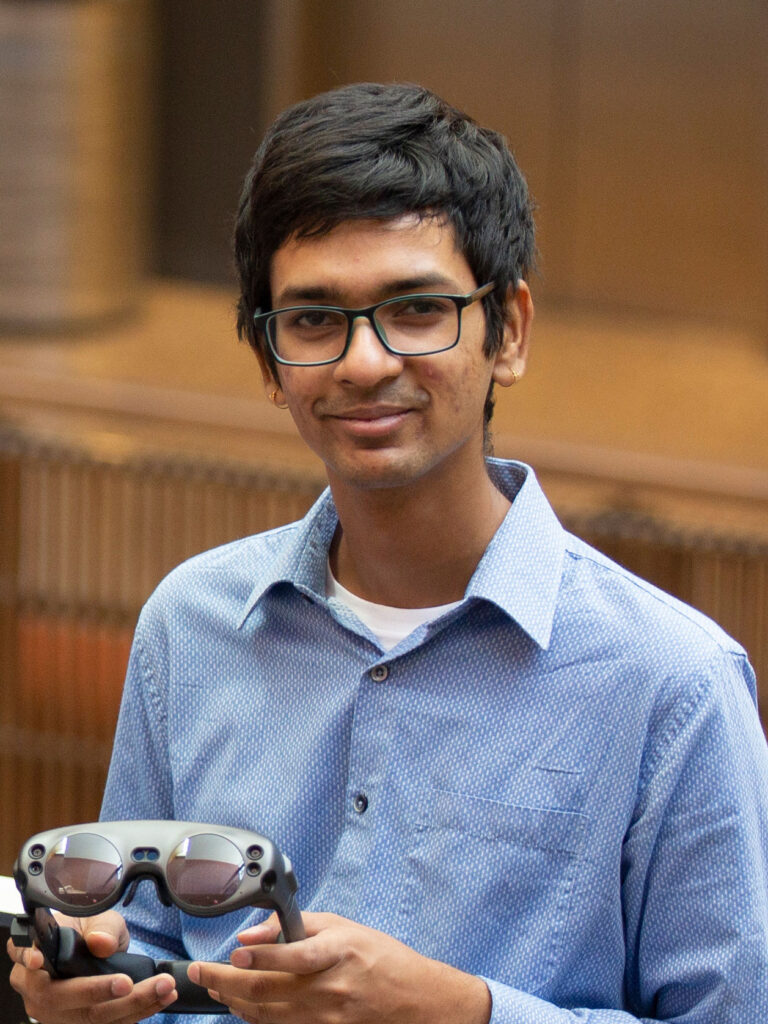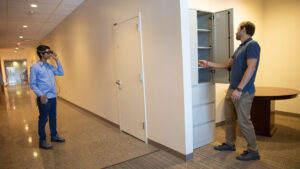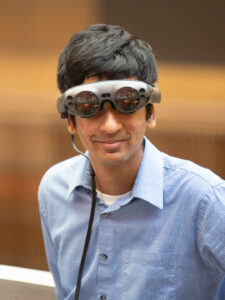Shanmukha Saketha Ramanujam Samavedam
Electrical engineering
Hometown: Guntur, Andhra Pradesh, India
Graduation date: Fall 2022
Additional details: First-generation college student

MORE | Fall 2021
Imaging Methods to Augment Human Vision Beyond Direct Line-of-Sight with mmWaves
This project is aimed at developing a robust classification and reconstruction mechanism capable of accurately estimating and correcting the position of objects that are hidden behind line-of-sight obstacles. This is achieved by applying techniques of ray casting/tracing, edge detection and estimation on images collected from a mmWave camera testbed. These results can be applied to real-time mmWave imaging systems to unlock navigational capabilities for autonomous driving, aid first responders in harsh conditions.
Mentor: Georgios Trichopoulos
Featured project | Fall 2021
When electrical engineering graduate student S. Saketha Ramanujam Samavedam heard about the MORE program during student orientation, he knew he had to apply. He has always been interested in all kinds of research, and this semester he has worked with Assistant Professor George Tricopoulos to explore imaging techniques that will enable us to see around obstacles.
What made you want to get involved in MORE?
I’ve always been interested in research of all sorts — math to medicine and engineering to space science. I was informed of the MORE program during my orientation days by the then-participants, and I immediately knew I had to apply for this program.
Why did you choose the project you’re working on?
I was introduced to the possibilities of non-line-of-sight imaging with mmWaves by Dr. Trichopoulos as part of our coursework, and it seemed interesting and I felt that it would be a challenging problem to solve for real-time use. While I like the idea of processing things in real time, the highlight of this project is the idea of getting to peek at non-line-of-sight objects.
How will your engineering research project impact the world?
This research will empower a class of devices that enable mixed-reality/augmented-reality headsets to look for objects in the non-line-of-sight domain, enabling soldiers or security personnel to look for potential threats. It will serve as an additional utility for first-response teams to locate and rescue people stuck in non-line-of-sight zones during times of disasters and distress.
Have there been any surprises in your research?
Not all things come with manuals and sometimes we have to improvise from the given text or reference documents to find our way around using a hardware device. This has very much been a surprise to me given that all of the projects that I had worked upon previously had information in one form or another documented in related areas.
What is the best advice you’ve gotten from your faculty mentor?
Always look for parallels, do not reinvent the wheel and when stuck, discuss or read the idea out loud — you’ll know why that particular step or method is leading to an unfruitful outcome.
Why should other students get involved in MORE?
Research in general is often deemed a road not for everyone. While I believe there are challenges in obtaining the results we expect, there is joy in discovery and elation once the research we’ve been working on starts yielding results. If you are in doubt and are questioning if research is for you, don’t worry, find a faculty member, ask them about their work, meet the students who work with them, volunteer your time, maybe seek a position in their lab and apply away. The only way to know if you are built for it is to try and MORE gives you that opportunity to try.


